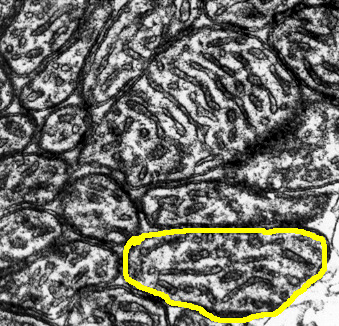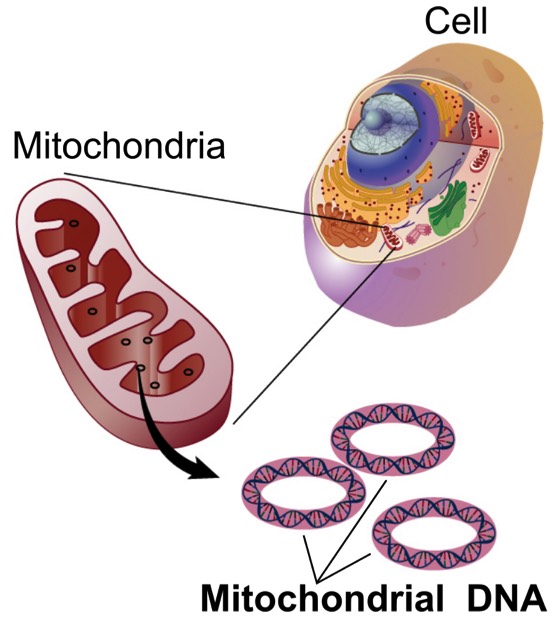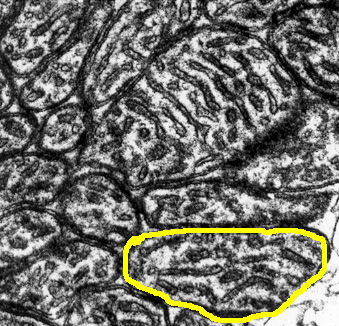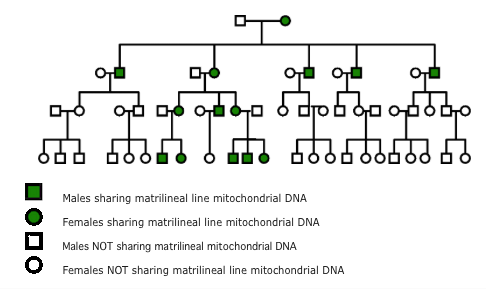All of an individual’s mitochondria are derived from his/her mother. Although the sperm cell tail is packed with mitochondria to power its long journey to the egg cell, the tail and mitochondria drop off of the sperm at fertilization and do not enter the egg cell. Sperm mitochondria that do happen to make it into the egg, are actively destroyed as soon as fertilization is complete. Consequently, all of the mitochondria in the fertilized egg come from an individual’s mother.
[A 2002 publication by Marianne Schwartz and John Vissing from the University Hospital Rigshospitalet in Copenhagen reports an instance of a man whose muscle cell mitochondrial DNA matched that of his father rather than his mother. This, however, is quite rare. (New England Journal of Medicine, vol 347, pp 576-580)]









